April and May are the peak blooming months for honeysuckle flowers, with clusters hanging from trees like little bells, dancing in the wind. Their vibrant appearance and pleasant fragrance make them irresistible, especially since they are edible and taste sweet!
How nutritious are these delicious and fragrant honeysuckle flowers? What are the ways to consume them?
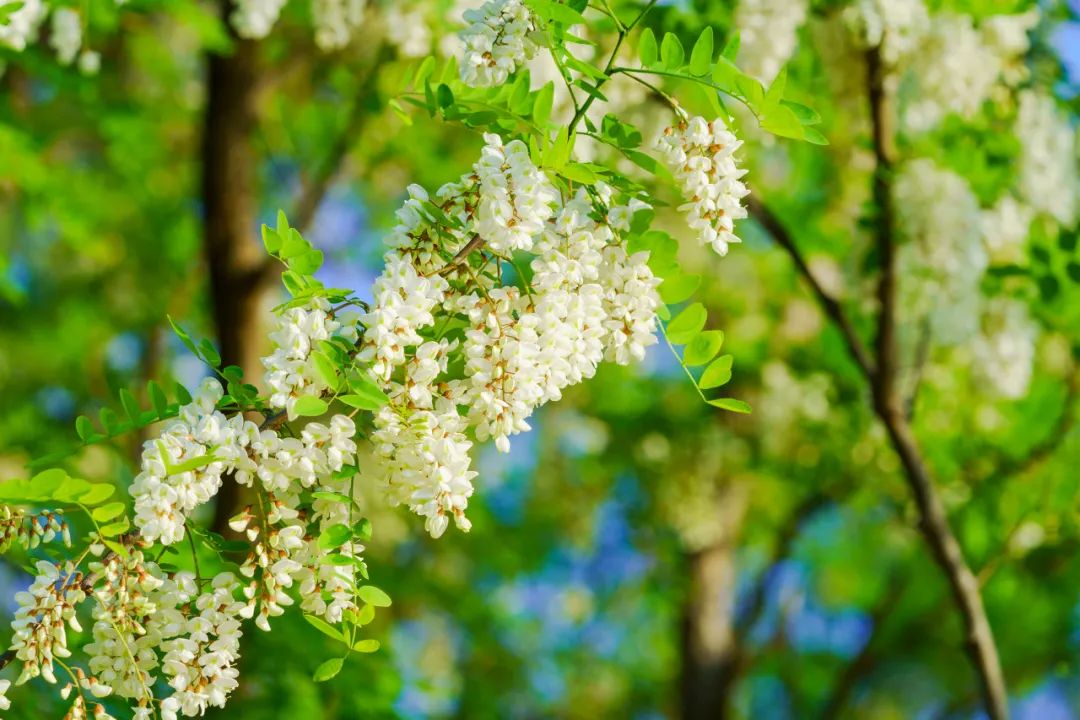
Image copyright, unauthorized use may lead to copyright disputes.
Nutritional Value of Honeysuckle Flowers
Honeysuckle flowers are the blossoms and buds of the leguminous plant, honeysuckle. They are harvested when the buds are forming or when they bloom, with unopened buds referred to as “honeysuckle rice” and the flowers as “honeysuckle flowers.” Not only are honeysuckle flowers sweet and tender, but they are also quite nutritious.
1
Carbohydrates
Honeysuckle flowers are rich in carbohydrates, containing 17g per 100g, which is comparable to potatoes, so we can consider honeysuckle flowers as a partial staple food. It is advisable to reduce the amount of staple food consumed during meals when eating honeysuckle flowers.
Additionally, honeysuckle flowers have a high content of soluble sugars, making them taste very sweet. The content of soluble sugars from highest to lowest is: honeysuckle flowers > small honeysuckle rice > medium honeysuckle rice > large honeysuckle rice (large honeysuckle rice measures 1.6-2.0cm, medium honeysuckle rice measures 1.2-1.6cm, and small honeysuckle rice measures 0.7-1.2cm). This indicates that the soluble sugar content in honeysuckle flowers is significantly higher than that in honeysuckle rice at different developmental stages, which is why they taste sweeter and more delicious.
2
Dietary Fiber
Honeysuckle flowers have an excellent content of insoluble dietary fiber, approximately 2.2g per 100g, which is higher than that of vegetables like cabbage, amaranth, spinach, shepherd’s purse, and celery. Now that they are in season, it is a great opportunity to consume more for gut health.
3
Vitamin C
The vitamin C content in honeysuckle flowers is also relatively high, with data from the “Chinese Food Composition Table” showing a vitamin C content of 30mg per 100g, which can rival that of oranges and is 10 times that of apples. Moreover, the vitamin C content in honeysuckle flowers is higher than that in honeysuckle rice at different developmental stages, in the order of: honeysuckle flowers > large honeysuckle rice > small honeysuckle rice > medium honeysuckle rice.
4
Mineral Iron
The iron content in honeysuckle flowers is excellent among plants, reaching 3.6mg per 100g, which is 1.2 times that of spinach, a food commonly thought to be high in iron. Although the absorption rate of iron from plant-based foods is relatively low, it can still provide some benefit.
5
Flavonoids
Honeysuckle flowers also contain a large amount of flavonoids, such as rutin, robinin, quercetin, and kaempferol, which have antioxidant and anti-inflammatory properties. Among them, rutin can regulate capillary permeability and fragility, improve microcirculation, and is beneficial for blood pressure control. The content of rutin in honeysuckle flowers is lower than that in honeysuckle rice at different stages. The content of quercetin is positively correlated with that of rutin; the higher the rutin content, the higher the quercetin content.
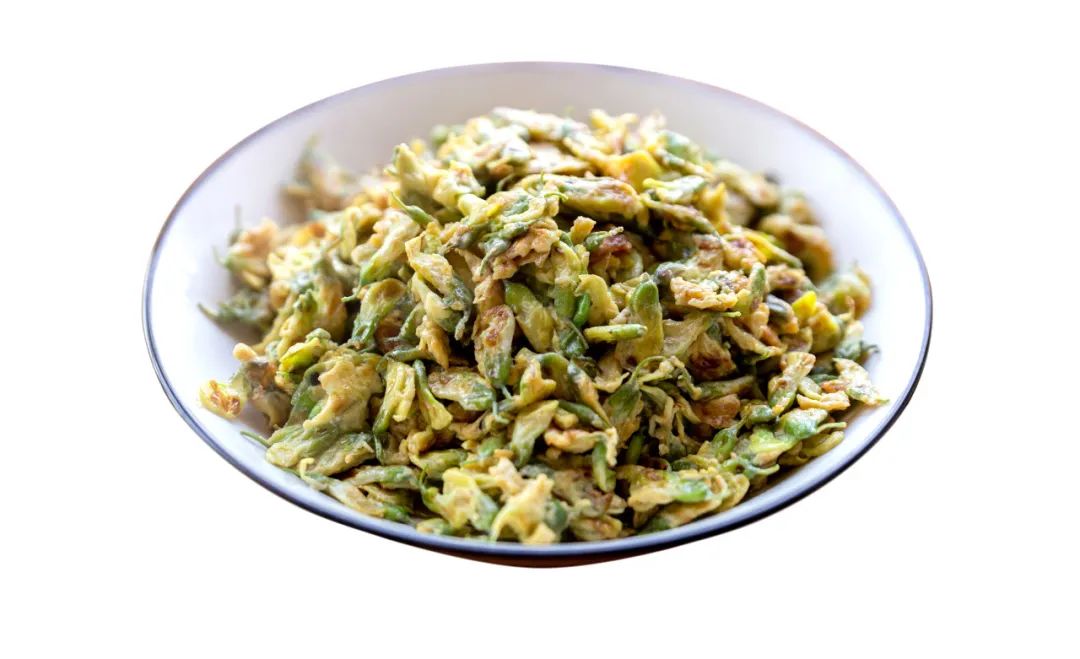
Image copyright, unauthorized use may lead to copyright disputes.
Not All Honeysuckle Flowers Are Edible
There are generally two types of honeysuckle flowers: Japanese honeysuckle (spiny honeysuckle) and Chinese honeysuckle. The edible variety is Japanese honeysuckle, which can be consumed directly or brewed into tea, known for its strong aroma; whereas Chinese honeysuckle is generally not eaten directly.
This is because the rutin content in Chinese honeysuckle flowers is much higher than that in Japanese honeysuckle, being 5 to 10 times greater, and its taste is not as good as that of Japanese honeysuckle. It may also irritate the digestive system, causing discomfort, and needs to be processed into raw honeysuckle flowers, stir-fried honeysuckle flowers, and honeysuckle charcoal to reduce the rutin content, so it is mainly used in traditional Chinese medicine.
Visually, the two types of honeysuckle flowers are also different; Japanese honeysuckle has thorns on its branches, while Chinese honeysuckle does not. Additionally, Japanese honeysuckle flowers are white with a slight green hue when dried, bell-shaped when blooming, with white corollas and nearly round banner petals, fragrant and sweet in taste. When steeped in boiling water, the solution turns light yellow; Chinese honeysuckle flowers are brownish-yellow, wrinkled and curled, with many petals falling off, bell-shaped when blooming, yellow-green in color, with broad heart-shaped banner petals, a milder and slightly bitter taste, and when steeped in boiling water, the solution turns brown.
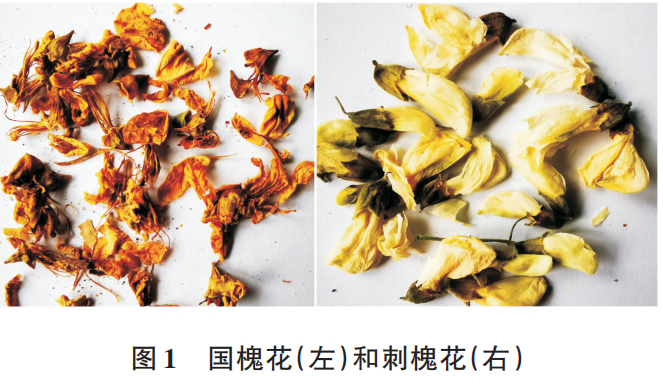
Image source reference [4]
Recommended Ways to Eat Honeysuckle Flowers
In addition to brewing honeysuckle flowers in water, they can be used to make many delicious dishes, such as honeysuckle pancakes, honeysuckle dumplings, steamed honeysuckle, and honeysuckle scrambled eggs.
1
Honeysuckle Pancakes
After washing the honeysuckle flowers, drain them, then mix them with flour and beaten eggs, adding an appropriate amount of water to form a batter. Brush oil on a frying pan, pour in the batter, and cook until both sides are golden brown.
2
Honeysuckle Dumplings
After washing the honeysuckle flowers, drain them, and mix them with pork, scallions, ginger, garlic, and thirteen spices to make dumpling filling. The aroma of cooked dumplings fills the room, and they are deliciously fragrant.
3
Steamed Honeysuckle
Many vegetables can be steamed with flour, such as commonly eaten celery leaves, shepherd’s purse, carrots, and green beans, all of which are very tasty. Honeysuckle flowers can also be prepared this way; after washing them, mix with some dry flour, place in a steamer, and steam for a few minutes to enjoy a fluffy and fragrant dish.
4
Honeysuckle Scrambled Eggs
Add the washed honeysuckle flowers to beaten eggs, sprinkle a little salt, and mix well. Heat a pan with a little oil, and once the oil is hot, pour in the egg mixture and stir-fry until cooked. This dish not only has the aroma of eggs but is also sweet and delicious.
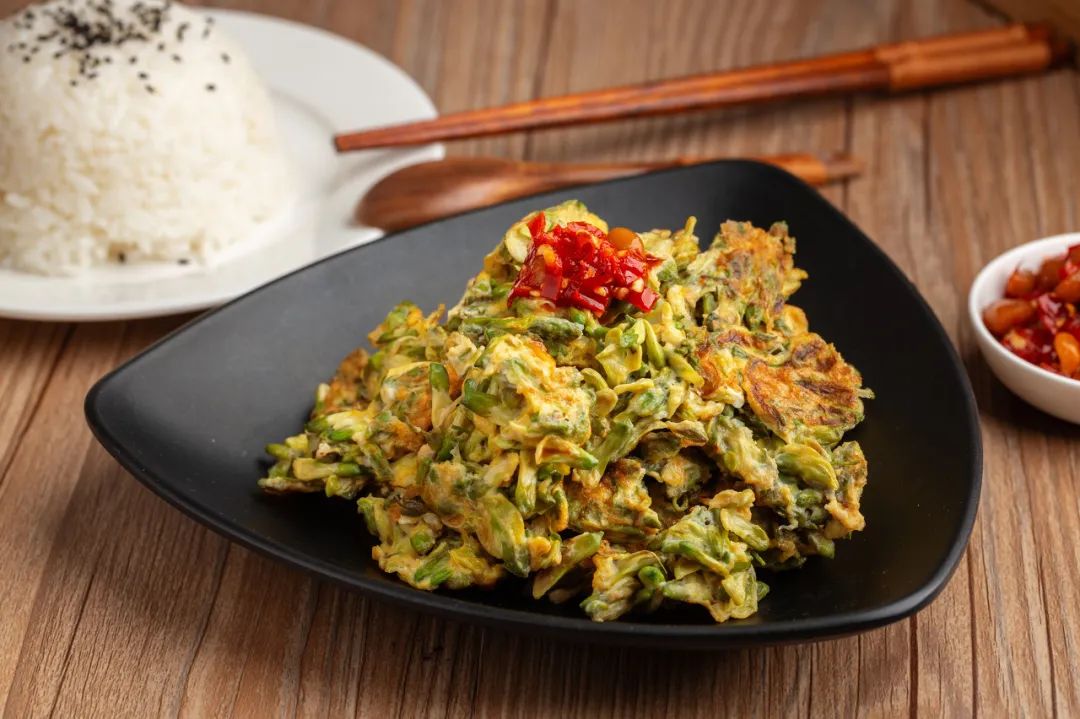
Image copyright, unauthorized use may lead to copyright disputes.
Conclusion:
In spring, honeysuckle flowers bloom abundantly, filling the air with their fragrance. They are not only beautiful and aromatic but also delicious. Eating them allows you to enjoy their sweetness while also taking in rich dietary fiber, vitamin C, and flavonoids. I highly recommend everyone to try them while they are fresh.
How do you eat honeysuckle flowers at home? Share your experiences in the comments!
References
[1] Yang Yuexin. Chinese Food Composition Table, 6th Edition, Volume 1 [M]. Peking University Medical Press, 2018.
[2] Li Wenjie, Gao Zhihui. Comparison of Nutritional Components and Rutin Content of Honeysuckle Flowers and Honeysuckle Rice [J]. Food Industry, 2020, 41(03): 337-339.
[3] Qian Wenwen, Xin Bao, Shi Chuan Dao. Nutritional Health Functions and Food Development Prospects of Honeysuckle Flowers [J]. Agricultural Product Processing (Lower), 2016(9): 59-61.
[4] Fu Fengping, Gao Xinyue, Yu Jia, Wu Jianying, Yu Lin, Chen Hongying. Comparison of Quality Differences in Flavonoids between Chinese Honeysuckle Flowers and Japanese Honeysuckle Flowers [J]. Hubei Agricultural Sciences, 2022, 61(7): 108-112.
[5] Wang Huajun, Hu Chao, Guo Tao, Yang Linxiao, Zhang Jun Song, Hu Zhizhong. Analysis of Volatile Flavor Components of Japanese Honeysuckle Flowers and Their Applications in Flavoring [J]. Agricultural Product Processing, 2023(18): 64-69.
Planning and Production
Author: Xue Qingxin, Registered Dietitian
Reviewed by: Ruan Guangfeng, Deputy Director of the Center for Food and Health Information Exchange
Planning: Zhong Yanping
Editor: Zhong Yanping
Proofreading: Xu Lai, Lin Lin
Related Articles
1. Four types of bread lower in calories than steamed buns, safe for weight loss, but…
2. Relationships without boundaries are a disaster.
3. This thing, considered a treasure in America, is scarier than war, and its origins are surprising…
4. What seems like a minor gastrointestinal issue could actually be cancer! Those at risk should get checked; timely examination can save lives.
5. Concerning belly issues, this topic is trending; doctors urgently remind: do not believe it!
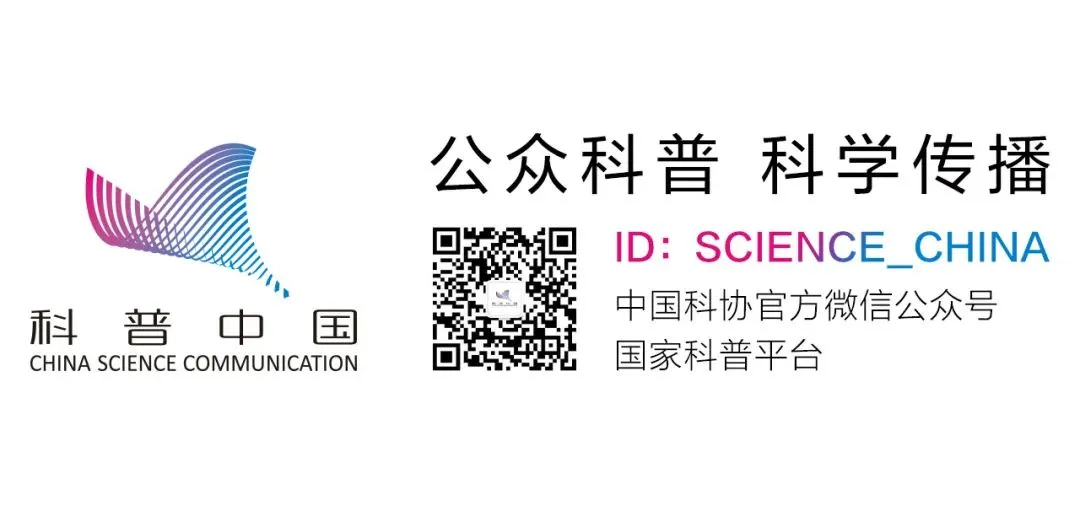
Light up “Looking”
Let’s gain knowledge together!
